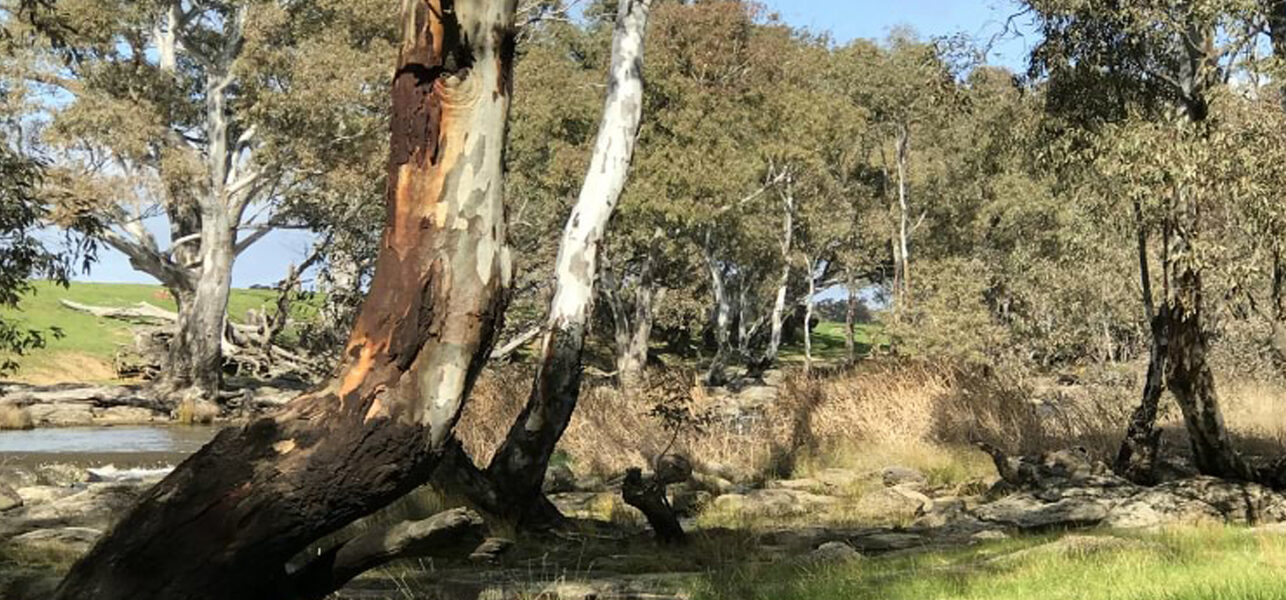
Dja Dja Wurrung
In early 2024, DDWCAC required specialist support and training to adopt an in-field solution to collect location and species data on invasive pests on Dja Dja Wurrung country.
The Challenge
Dja Dja Wurrung Clans Aboriginal Corporation (DDWCAC) is committed to the revitalisation of Dja Dja Wurrung country located in Central Victoria. As part of the Victorian Government’s Deer Control Program, the corporation received funding to manage invasive species within national and state parks on Dja Dja Wurrung country. With this funding, DDWCAC are required to record locations of invasive species
in the field and provide standardised data back to the Victorian Government for wider pest control supervision.
In early 2024, DDWCAC required specialist support to design an open-source solution to allow field staff to collect species location data in-field via a mobile device and incorporate onto a desktop GIS workspace to display for interrogation of species data in-office. The team also needed custom training, to familiarise DDWCAC staff with the desktop/mobile solution created.
Custom Training
Once the client approved the solution design, the former Spatial Vision team, now operating in Veris, crafted a tailored training program for DDWCAC field workers. We focused on QGIS usage and typical workflows that DDWCAC staff might encounter both in-office and in the field. Understanding the varied user levels from the consultation, the training materials were designed for beginner users, covering foundational concepts before exploring more advanced project-specific workflows, equipping participants with the skills to confidently navigate the QGIS and QField solutions prepared by Spatial Vision now operating in Veris.
All former Spatial Vision courses now operationg under Veris, are facilitated using pre-configured workspaces and sample data. For custom training (like the training hosted for DDWCAC), we encourage the use of client data in demonstrations and exercises to allow customised content to be directly applicable to their specific needs, using familiar and relevant data. The training was facilitated by one of our experienced trainers who regularly utilises GIS technologies in their role as a Geospatial Analyst.
Species location map
Species collection form
QField workspace
The Solution
To fulfill the client’s need, we used our expertise in Geographic Information Systems (GIS), open-source platforms like QGIS, training and mentoring, data analysis, and mapping.
We collaborated closely with DDWCAC stakeholders as it was crucial we designed a cost-effective, purposebuilt data capture solution and custom course program. In order to achieve this solution, Spatial Vision proposed a three-phase methodology:
- Consultation: Engage with stakeholders to understand requirements, including GIS workspace design (data layers, symbology, online/offline functionality) and mobile solution specifications (forms, domain lists, constraints, deployment options).
- Building Workspace and Mobile Solution: Develop the GIS workspace and mobile solution according to the gathered specifications.
- Delivery of customised training sessions to ensure DDWCAC staff could effectively use the solution and meet data standards.
The Benefits
Development of the desktop and mobile solution focussed on addressing the key findings from the consultation and meeting all stakeholder requirements, including provision of data to DEECA in the prescribed format. While developing the solution, we sought feedback from field workers to ensure they could seamlessly collect fit-for-purpose data, while avoiding errors and tedious data entry.
The final form covered valuable aspects such as:
- Automatic generation of latitude and longitude values from the mobile device
- Conditional visibility to remove unnecessary questions based on field worker responses
- Restrictions that ensured accurate data entry and input guidance for the user
- Automatic generation of scientific names and species IDs as data entered.
Species collection also made use of custom and dynamic symbology to give field workers confidence in their field collections.